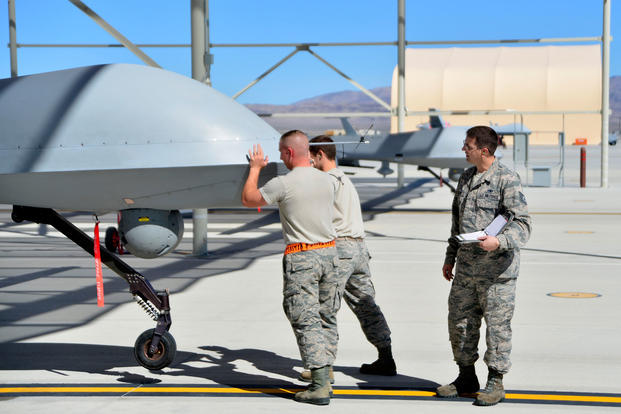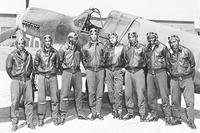NATIONAL HARBOR, Md. -- It's possible for airmen operating drones and those gathering intel to do more with less. Manpower, that is, according to an Air Force official.
As part of its new ISR flight plan, dubbed the Next Generation Intelligence, Surveillance and Reconnaissance Dominance Flight Plan, the service's goal is to trim away roughly 5,000 intelligence personnel at the headquarters level by 2028, according to Col. Julian Cheater, head of the 432nd Wing at Creech Air Force Base, Nevada.
Some squadrons have already seen a reduction in personnel as the Air Force finds new ways to streamline ISR operations, he said in an interview with Military.com on Monday at the Air Force Association Air, Space and Cyber conference. "Right now what we do is we add a lot of additional equipment [that] is not necessarily all integrated together … it means we ... have multiple top secret to secret [equipment and data] being used.
"As you streamline that process and make it a little more user friendly, you can reduce the number of people involved," he added.
Related content:
- MQ-9 Gets First Air-to-Air Kill in Training Exercise, Air Force Official Says
- Air Force Wants to Decrease Manning for Its UAVs
- Beyond BRRRT: Airpower Alone Won't Secure Victory, Goldfein Says
But that doesn't mean people are losing their jobs. The Air Force intends to build up its operational ISR squadrons as part of its proposal to add 74 squadrons.
The Air Force remains at roughly 60 combat lines, or remotely piloted aircraft combat air patrols (CAP), per day. Without disclosing agencies, Cheater said there are "government bodies" as well as contractors adding to the total U.S. government CAP flights for single missions.
For years, the service has said it wants to operate its fleet of unmanned aerial vehicles more efficiently and has been looking for ways to reduce the number of airmen needed to manage them and the CAP flights while still getting better intelligence collection.
Lt. Gen. Steven Kwast, head of Air Education and Training Command, in February said it was part of his vision to have fewer service specialties monitoring drone operations to free up more airmen for other domain missions.
"We're going to change the game. I am working with the whole of the Air Force to build a strategy and an architecture that gives us more ISR for less people, for less money," Kwast said at the time.
Meanwhile, the ISR plan, released last month with few specifics for operational security reasons, has become the service's new road map to incorporate more autonomy and data from multiple sensors across platforms stationed around the globe.
"You can automate a lot," Cheater said. "We're a fan of that. But I still think you will have to have someone at the end of the day that's going to determine if something warrants a strike or not."
-- Oriana Pawlyk can be reached at oriana.pawlyk@military.com. Follow her on Twitter at @Oriana0214.










